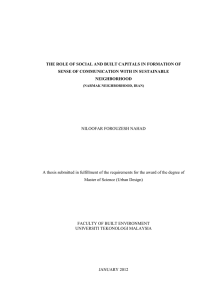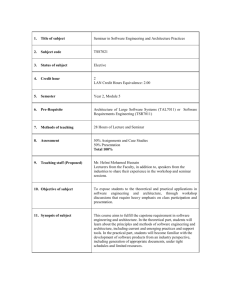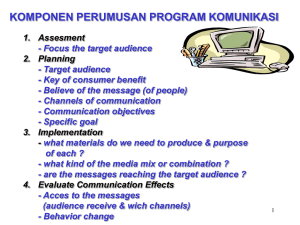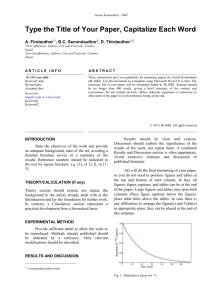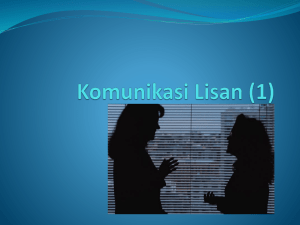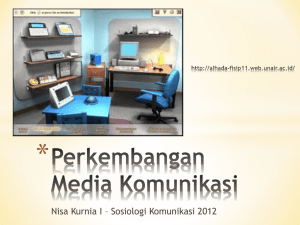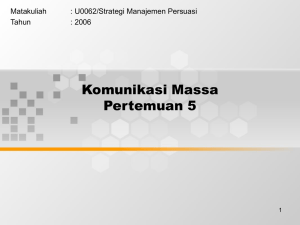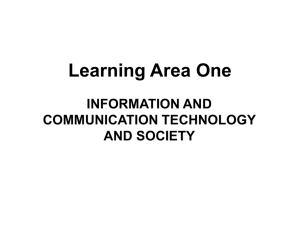Komunikasi dalam Pendidikan
advertisement
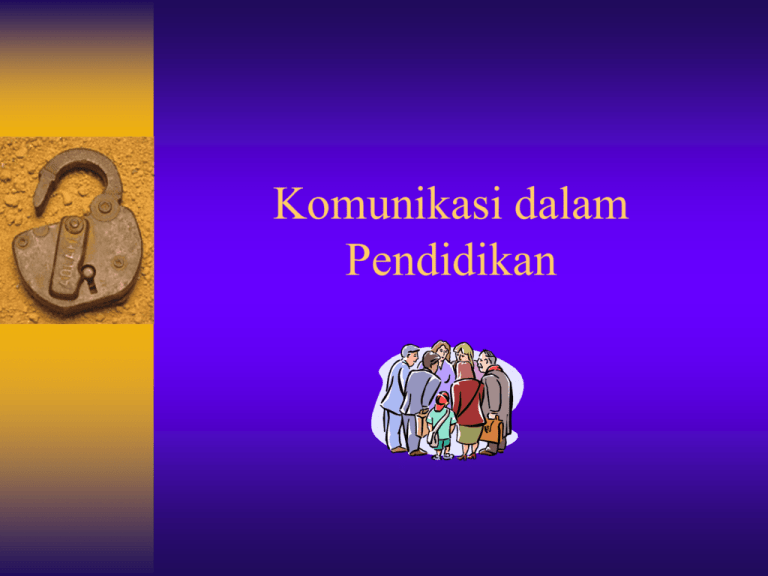
Komunikasi dalam Pendidikan For your reflection! The key to success is your ability to effectively communicate In the information age, we need more than good ideas to get ahead. Just as important is the ability to quickly and persuasively communicate those ideas clearly, concisely with self-confidence Skills needed related to communication in job advertisement: Proficient in both written and spoken English Good in PR and communication skills Social psychologists estimation – There is usually a 40 – 60% loss of meaning in the transmission of messages from sender to receiver People in organizations typically spend over 75% of their time in an interpersonal situation Effective communication is an essential component of organizational success Good interpersonal skills, diplomacy, sense of negotiation and authority over personnel Conversant in English, BM and Mandarin National Communication Association (NCA) Research and instruction in the discipline focus on the study of how messages in various media are produced, used, and interpreted within and across different contexts, channels, and cultures. Definitions Communication is the process of people sharing thoughts, ideas and feelings with each other in commonly understandable way (Hamilton) Communication is much more than just the exchange of words: All behavior convey some message and is, therefore, a form of communication (Johnson) One-way communication: Communication in which information is always transferred in only one preassigned direction Effective communication Effective communication exists between two persons when the receiver interprets the sender’s message in the same way the sender intended it Communication Model Model S-M-C-R Source (sumber) Mesej (message) Channel/medium (saluran) Receiver (penerima) Five Theoretical Approaches to Organizational Communication Mechanistic approach Organizations are machines Human resource approach Organizations are made up of creative individuals General system approach Organization is an organic system Political approach Organization is the site of struggle Cultural approach Organization is a culture onto itself Teori Organisasi dan Komunikasi Teori Klasik Komunikasi diwujudkan untuk memudahkan arahan dan kawalan dalam organisasi melalui saluran menegak (vertical) dan formal Komunikasi bersifat sehala, atas ke bawah dan berkaitan dengan tugas (task related) Messages move up the hierarchy through a series of whispers, but down the hierarchy through a series of loudspeakers Teori Sistem Sosial Komunikasi didesak oleh Kajian Hawthorne Communication can be be defined as the exchange of meaning ‘exchange of meaning’ dalam konteks ini mengambil kira aspek sosio-psikologi penerima dan penghantar The meaning of the words are not in the words; they are in us Teori Sistem Terbuka Komunikasi merupakan pertukaran mesej dan makna (meaning) antara sesebuah organisasi dan persekitarannya, dan juga antara rangkaian subsistem yang saling bergantung Sifat-sifat komunikasi Menegak Maklumat yang disiarkan dari atas ke bawah lebih merupakan surat-surat perkeliling, panduan program, polisi kementerian, panduan untuk pentadbiran dan sebagainya Maklumat dari bawah ke atas pula merupakan laporan, maklumat penyeliaan, permohonan untuk mendapatkan sumber pendidikan dan sebagainya Sifat-sifat Komunikasi Mendatar Komunikasi akan kurang terdedah kepada perubahan apabila berlaku dalam kumpulan sama jenis (homogeneous) Tiga jenis perubahan yang sering berlaku: Levelling Sharpening Assimilation Communication Styles Sensors Pragmatic Direct Tend to command Feeler Sensitive to other’s needs More concern with the process of interaction rather than the content of it Rely on personality rather than data Thinkers Make decisions after considering all the alternatives Overly cautious and conservative Intuitor Imaginative and sometimes hard to understand Never close to issue, leave things unsolved Too abstract Different Communicating Styles Between Men and Women Men talk about things (business, food and sports) Women talk about people rather than things Men convey facts ant not details Women convey feelings and details Men compete Women cooperate Obstacles to Communication Selective listening Frame of reference Source of credibility Semantics Value judgment Technical jargon Time pressures Communication overload Organization size Officialese Age/experience differential Fear of asking something that might sound foolish Not wanting to admit not knowing something Hyperactive mind Grapevine Every organization has an informal communications network, or "grapevine," that operates in addition to the official channels Communication skills Listening skills Ability to get the message across Emotional management in the communication process Assertive communication Aware of communication barriers Judge the content and not the messenger Paraphrase when necessary Respond in an interested way Own up: Use “I” and not “They” Example of Paraphrasing Student: I don't like this school as much as my old one. People are not very nice." Counselor: You are unhappy at this school? Student: Yeah. I haven't made any good friends. No one includes me. Counselor: You feel left out here? Student: Yeah. I wish I knew more people. Kemahiran mendengar Training yourself to listen more effectively could potentially be the most important skill you acquire in building a successful career for yourself. Berhenti bercakap Biar orang yang bercakap berasa selesa Tunjukkan yang kita mahu mendengar Elakkan gangguan Mendengar dengan empathy Sabar/kawal perasaan Listen to whatever is being said without getting too emotional or losing your temper Bertanya Non-verbal Communication Research suggests that nonverbal communication is more important in understanding human behavior than words alone--the nonverbal "channels" seem to be more powerful than what people say. We lift eyebrow for disbelief. We rub our noses for puzzlement … (Julius Fast) Non-verbal communication includes: Facial expressions (mimik muka) Tones of voice (tona suara) Gestures (pergerakan badan) Eye contact Spatial arrangements (susunan ruang) Patterns of touch/tactile (corak sentuhan) Cultural differences (perbezaan budaya) Most of us spending 75% or our waking hours communicating our knowledge, thoughts, and ideas to others. However, most of us fail to realize that a great deal of our communication is of a nonverbal form as opposed to the oral and written forms. The Roles of Non-Verbal Communicaiton Repetition Contradiction Substitution Complementing Accenting For Your Thoughts! If you want to be happy, count the things that you have but money can’t buy!
